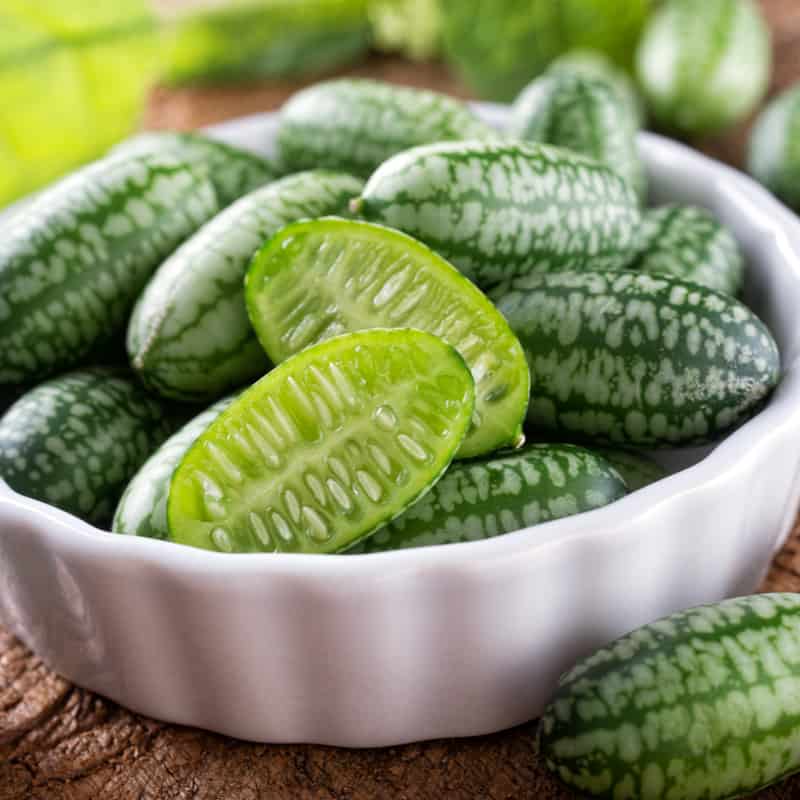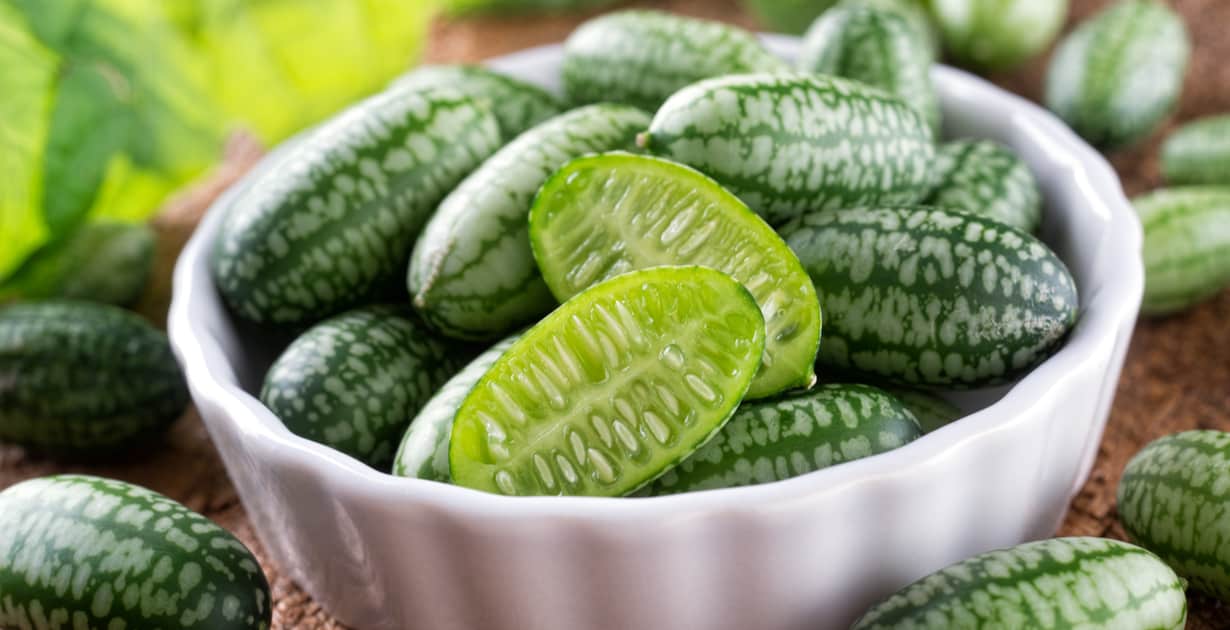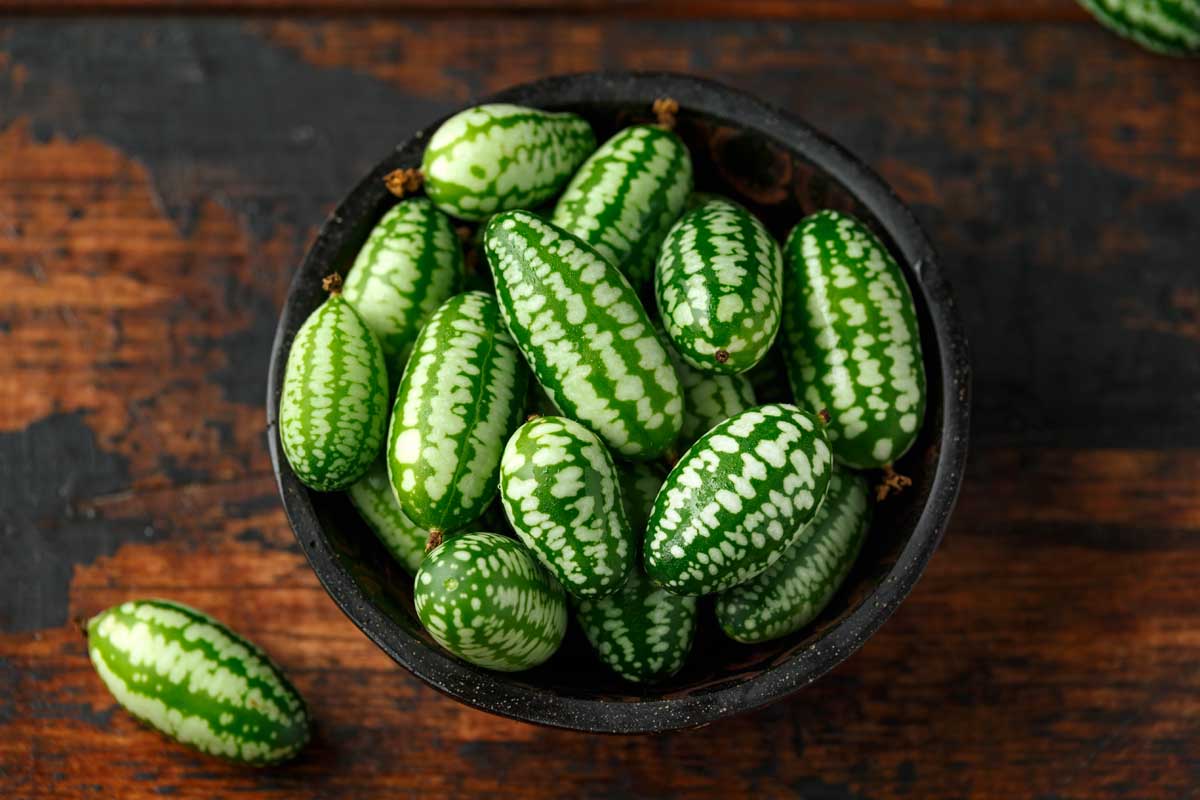The Best Companion Plants For Cucamelons
Cucamelons, also known as Mexican sour gherkins, are a type of vine-growing cucurbit that is native to Central and South America. They are known for their small, round fruits that have a slightly sour taste. Cucamelons are a relatively easy crop to grow, and they can be grown in both containers and in the ground.
One of the best things about cucamelons is that they are compatible with a wide variety of companion plants. Companion planting is the practice of planting certain plants together in order to benefit each other. By planting cucamelons with the right companion plants, you can improve their growth, yield, and overall health.
Here are some of the best companion plants for cucamelons:
- Corn: Corn is a tall plant that can provide cucamelons with some much-needed support. The corn stalks can also help to shade the cucamelon plants from the hot sun.
- Beans: Beans are nitrogen-fixing plants, which means that they can help to enrich the soil for cucamelons. Beans can also help to suppress weeds, which can free up your time and energy for other gardening tasks.

- Dill: Dill is a fragrant herb that can help to repel pests from cucamelons. It can also attract beneficial insects, such as ladybugs and lacewings, which can help to control pests naturally.

- Onion: Onions are another fragrant herb that can help to repel pests from cucamelons. They can also help to improve the flavor of the cucamelon fruits.
- Radish: Radishes are a fast-growing crop that can help to improve the drainage in the soil for cucamelons. They can also help to suppress weeds.

- Tomatoes: Tomatoes are another tall plant that can provide cucamelons with some support. They can also help to attract beneficial insects, such as ladybugs and lacewings.

- Peas: Peas are another nitrogen-fixing plant that can help to enrich the soil for cucamelons. They can also help to suppress weeds.
- Asparagus: Asparagus is a tall plant that can provide cucamelons with some support. It can also help to improve the drainage in the soil.

In addition to these plants, cucamelons can also be grown successfully with other cucurbit plants, such as cucumbers, melons, and squash. However, it is important to avoid planting cucamelons near potatoes or sage, as these plants can compete with cucamelons for nutrients and water.
By planting cucamelons with the right companion plants, you can help to ensure that they have a healthy and productive growing season. So next time you are planning your garden, be sure to consider these beneficial plants for your cucamelon crop.
Conclusion
Cucamelons are a delicious and versatile vegetable that can be grown in a variety of climates. By planting them with the right companion plants, you can improve their growth, yield, and overall health. So next time you are planning your garden, be sure to consider these beneficial plants for your cucamelon crop.
Cucamelon companion plants are a great way to improve the health and productivity of your cucamelon plants. Some good companion plants for cucamelons include:
- Corn: Corn provides shade and support for cucamelon vines.
- Dill: Dill attracts beneficial insects that help to control pests.
- Onions: Onions repel harmful nematodes that can damage cucamelon roots.
- Radishes: Radishes help to improve the drainage of soil, which can help to prevent cucamelon plants from developing root rot.
- Tomatoes: Tomatoes and cucamelons are both susceptible to the same pests and diseases, so planting them together can help to protect each other.
If you're looking for more information about cucamelon companion plants, I recommend visiting Gardenia Inspiration. This website has a wealth of information about cucamelons, including a list of recommended companion plants.
FAQ of cucamelon companion plants
What are the best companion plants for cucamelons?
Cucamelons are a type of melon that is native to Mexico. They are also known as Mexican sour gherkins or mouse melons. Cucamelons are a relatively new crop to many gardeners, so there is some confusion about what plants they can be grown with.
Here are some of the best companion plants for cucamelons:
- Corn: Corn is a good companion plant for cucamelons because it provides a trellis for the cucamelon vines to climb. Corn also helps to shade the cucamelon plants, which can help to prevent them from getting sunburned.
- Beans: Beans are another good companion plant for cucamelons. Beans fix nitrogen in the soil, which can help to improve the growth of the cucamelon plants. Beans also help to crowd out weeds, which can give the cucamelon plants more room to grow.
- Dill: Dill is a good companion plant for cucamelons because it attracts beneficial insects, such as ladybugs and hoverflies. These insects help to control pests that can harm cucamelon plants, such as aphids and whiteflies.
- Lettuce: Lettuce is a good companion plant for cucamelons because it doesn't require a lot of space. This means that you can plant cucamelons and lettuce together in the same bed without worrying about them competing for space.
- Tomatoes: Tomatoes are another good companion plant for cucamelons. Tomatoes help to deter pests that can harm cucamelons, such as cucumber beetles and squash bugs. Tomatoes also provide shade for cucamelon plants, which can help to prevent them from getting sunburned.
What plants should I avoid planting near cucamelons?
There are a few plants that you should avoid planting near cucamelons. These plants include:
- Sage: Sage can inhibit the growth of cucamelons.
- Potatoes: Potatoes can attract the same pests as cucamelons, such as cucumber beetles and squash bugs.
When should I plant cucamelons?
Cucamelons should be planted in the spring after the last frost. They need full sun and well-drained soil. Cucamelons can be grown in containers or in the ground. If you are planting them in containers, make sure the container is at least 12 inches deep.
How do I care for cucamelons?
Cucamelons need regular watering, especially during hot weather. They also need to be fertilized every few weeks. Cucamelons are relatively pest-resistant, but they can be susceptible to cucumber beetles and squash bugs. If you see any pests, you can remove them by hand or spray them with insecticidal soap.
Image of cucamelon companion plants
- Corn: Corn can provide cucamelons with support and shade, and it also helps to deter pests.
- Dill: Dill helps to repel pests from cucamelons, and it also helps to improve the flavor of the cucamelon fruits.
- Onion: Onions help to repel pests from cucamelons, and they also help to improve the flavor of the cucamelon fruits.
- Radish: Radishes help to improve the soil drainage around cucamelons, and they also help to deter pests.
- Tomatoes: Tomatoes help to deter pests from cucamelons, and they also help to improve the flavor of the cucamelon fruits.
Post a Comment for "The Best Companion Plants For Cucamelons"